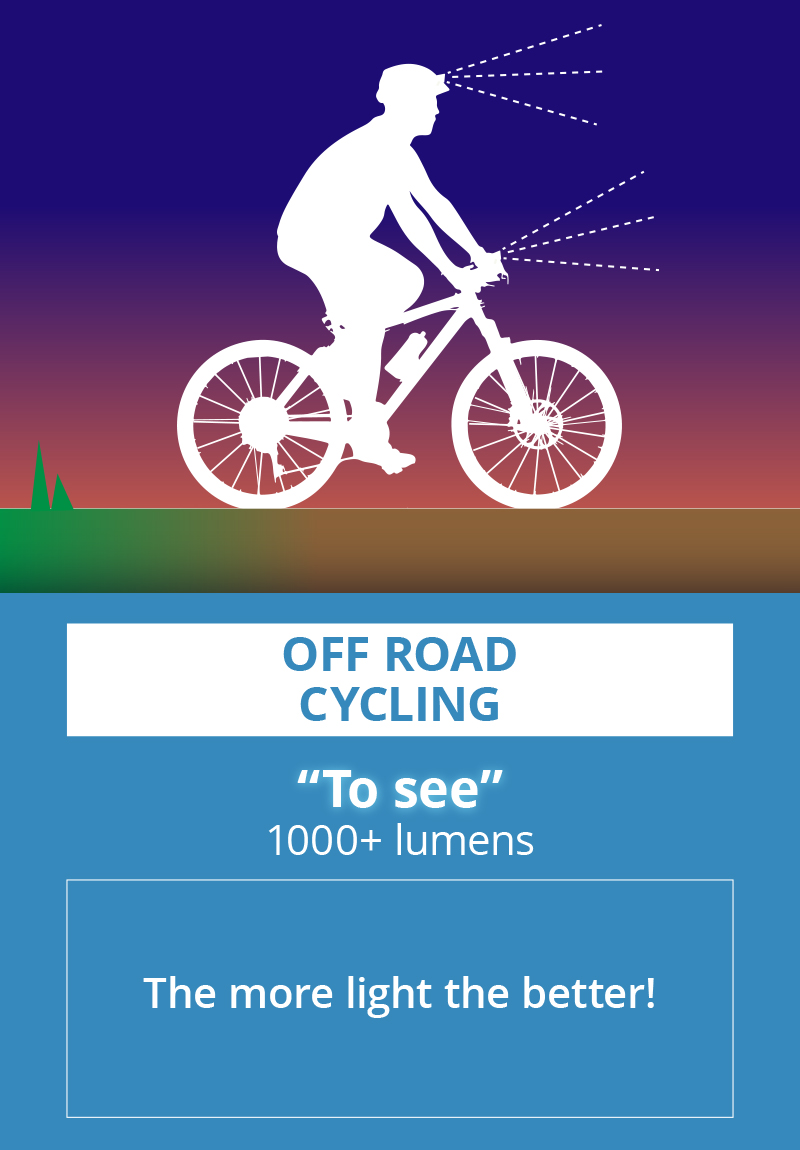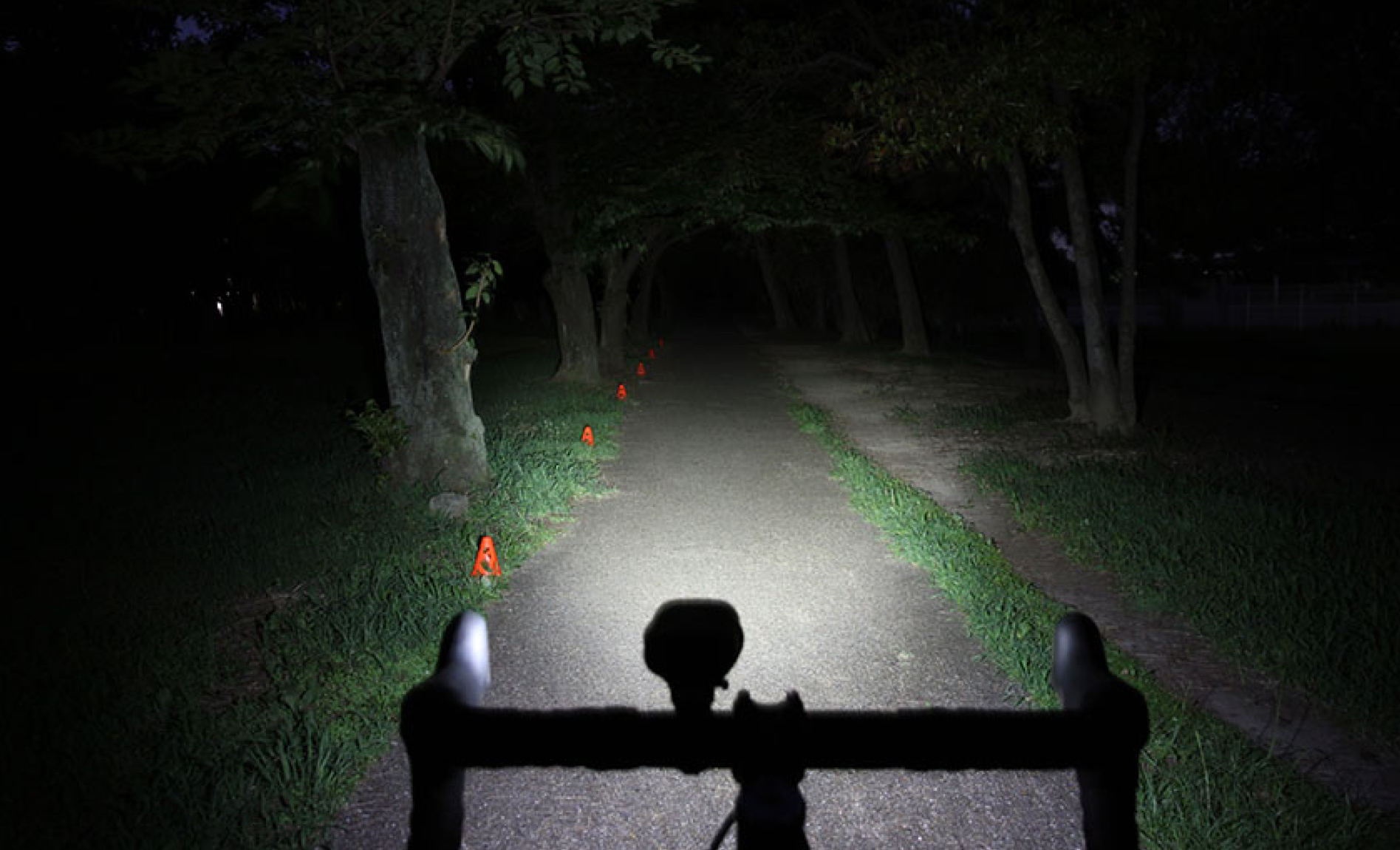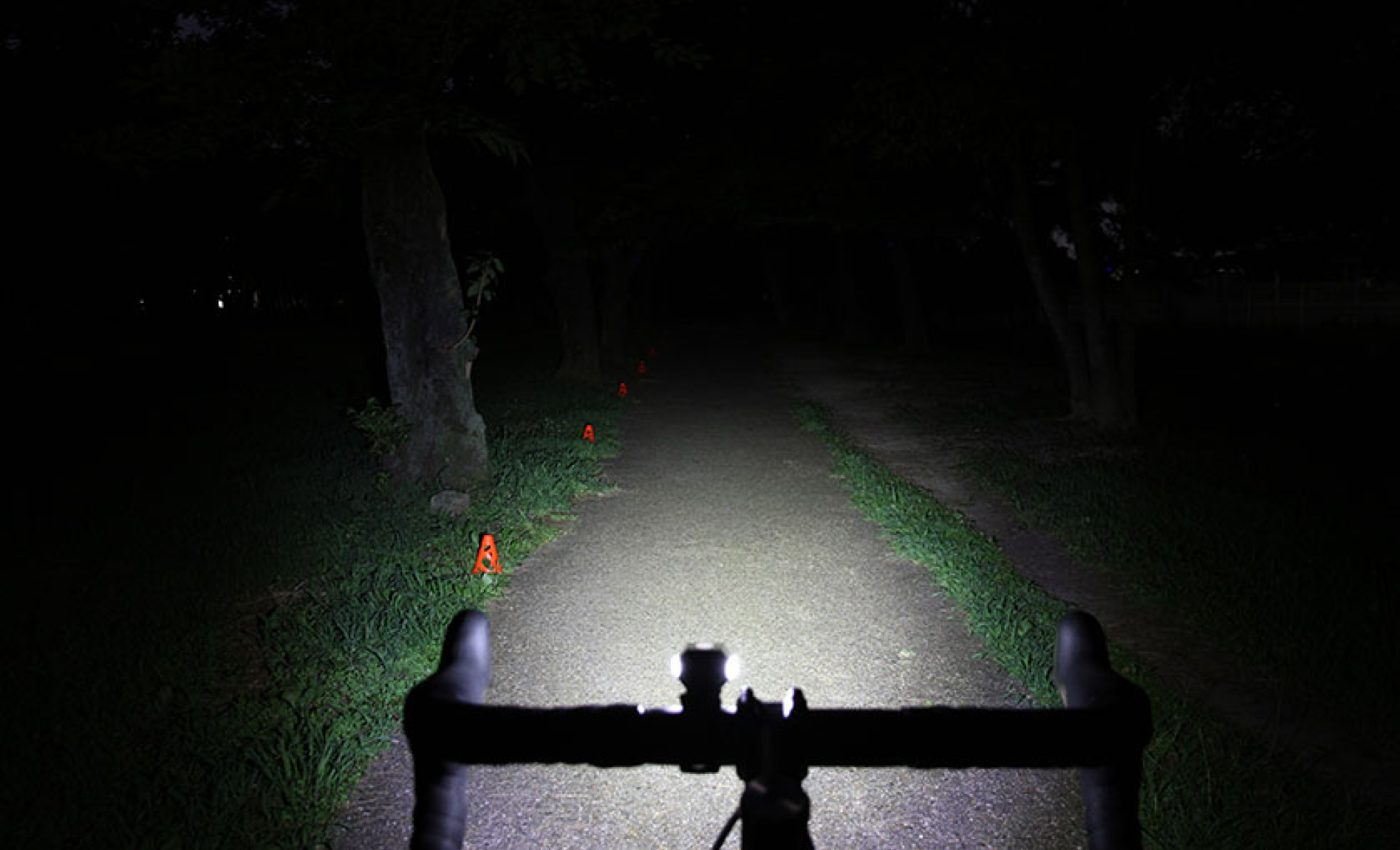
Bicycle Lights Buying Guide
It is a requisite for bikes in Ireland to be fitted with reflectors and lights to ensure that other road users see them. Bicycles should have a red rear light and a white front light. It sounds simple. However, with the array of bicycle lights on offer, it can be hard to know which one to choose. For that reason, we've created this guide to bike lights to help you determine which lights are best for your bike.
Types of bike lights
The first thing you need to consider when purchasing a bike light is which type of light you need.
Bicycle lights can be divided into the following categories.
Rear Bike Lights
As their name suggests, rear lights are for the back of your bike. They fit onto your bike's seat post with mounts or rubber bands. Their red beam makes sure traffic sees you.
Front Bike Lights
Front lights are attached to the front of your bike (usually onto your handlebars) and throw out a white beam. Front bicycle lights have two functions: to be seen and to help you see.
FRONT LIGHTS TO BE SEEN
Front lights, designed to be seen, are ideal for lit roads and urban environments where the street lights are lighting up the path for you, but you still want to be seen by other road users. These front lights are usually less powerful and cheaper than their counterparts designed to enhance visibility. These are the perfect bicycle lights for commuting on Dublin roads or any other city with good public lighting.
FRONT LIGHTS TO SEE
If you are cycling on unlit roads or going off-road, you will need a front light to help you see what's ahead. Powerful mountain bike lights have broader beams to let you see around corners and give you the best vision in low light conditions. These are the lights you need to go out on Three-Rocks trails or any other trails on the outskirts of Dublin and across Ireland.
Difference between various lumen powers.
Bike Light Sets
Light sets are a budget-friendly way to buy a front and rear light together. However, it might not be a suitable solution if you are looking for a particular front or back light, as it won't give you the option to mix and match.
Wearable Lights
Not quite traditional bike lights, wearable lights are also available. They are lights that can be attached to your jacket, helmet or bag, making you extra visible on your bike.
How many Lumens is good for a bike light?

The next thing to consider when purchasing a bike light is how powerful or how bright your bicycle light needs to be. Once again, this is decided by the type of cycling you are doing and where you are cycling.
Lumen is the unit used to calculate the power of bicycle lights. In scientific terms, this is the luminous flux, i.e. the amount of visible light given by a given source per unit of time. In short, the more lumens, the more energy is emitted and the brighter the light.

Some bike light brands use other units to determine how bright a light is. You might come across the following terms when researching bike lights:
- Candela: the light intensity of an ordinary candle.
- Lux: light's brightness over a given area, 1 lux = 1 lumen over one m²
- Watts: the measurement used for household lighting and represents how much electrical power the unit consumes, which is not as relevant when bike lights are involved.
So, what bike light do you need? If you consider that car's headlights have 1200 lumens on average and that bike lights vary between 50 to 2000 lumens, you can get a little confused with respect to what lumens are best for your needs.
You can follow the rules below:
Rear lights: Up to 100 Lumens
As they are designed only to make you visible to other road users, most rear lights do not need to excel 100 Lumens. However, we recommend combining at least two of them together for extra safety in urban areas. The idea is to have one attached to your seat post while using the other on the back of your helmet or backpack to increase the angle of visibility of your lights and make you extra safe. Having two lights also means you have a backup in case one of them runs out of battery.
Front lights for urban environment: Up to 500 Lumens
If you are cycling on well-lit roads, your front lights are here to increase your visibility. They make sure you are seen by other road users. Therefore, anything up to 200 lumens is sufficient.
At Eurocycles, our most popular "Be Seen" bike lights are the Omni 5 front lights and if you prefer to go for a set, we recommend the Omni 3 bike light set.
Front lights for unlit roads: 800 Lumen and over
However, if your commute involves some dark roads and you need to see potholes and other oncoming dangers. Lights with this output will give you enough visibility for suburban environments.
The Cateye Sync Core 500 is a prime example of bike lights designed for unlit roads.
Front lights for off-road: 1000 Lumen and over
Mountain bike lights for low light conditions and nighttime riding require a more powerful output. More expensive than other bike lights, these will also have bigger battery packs to last longer and broader beams to see around corners.
Favourite amongst our off-road customers, the Volt 1700 boasts 1700 Lumens and has a handy USB rechargeable port, so you never have to worry about replacing batteries.



Other things to consider before buying a bike light.
What is the law on bicycle lights?
By law, if you want to use a bicycle in Ireland, your bike must be fitted with a rear reflector and lights to ensure other road users see you. The legal requirements are that one white beam front light and one red rear light must be mounted on bikes. Bike lights must be switched on during "lighting-up time", i.e. between half an hour after sunset and half an hour before sunrise.
How does the bicycle light work?
Bike lights are powered by either disposable batteries or rechargeable USB ones. Rechargeable bike lights are great if you are commuting to work as they can be charged easily at your desk, so you never run out of battery on your way home. They tend to be a little more expensive to buy. But, they are cost-effective over time as you do not need to purchase new batteries to keep them working.
Where to fit bicycle lights?
Bike lights are mounted to your bike thanks to either rubber straps or brackets. Usually, your front light will be mounted on your handlebars while your rear light is fitted on your seat post. Mounting brackets make it easy to remove your bike lights (preventing theft) and easy to charge your lights.
At Eurocycles, we carry a selection of mounts and lights accessories so you can get the best out of your bicycle lights.
How long do bike lights last?
With advanced technology like LED lights, bicycle lights are now quite powerful yet energy efficient. As an average rule, you should expect at least 3 hours of run time on a single charge for rechargeable bike lights and up to 10 hours for non-rechargeable ones. However, the battery of your bike light will depend on its output and the usage you make of it. A light on its flashing mode will last longer than on full beam.
Are bike lights waterproof?
Most bicycle lights are water-resistant. Some lights will even be waterproof. The IP scale (Ingress Protection) assesses particle and water resistance. For regular cycles in the rain, we recommend you use lights with an IPX rating of five or higher. Lower ratings indicate water-resistant, not fully waterproof products.








